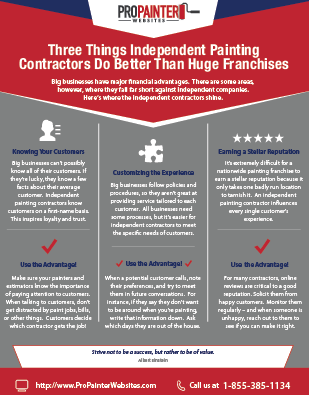Aspects To Take Into Consideration For Industrial Exterior Painting By Period: Necessary Information You Ought To Have
Aspects To Take Into Consideration For Industrial Exterior Painting By Period: Necessary Information You Ought To Have
Blog Article
Write-Up Composed By-Doherty Rosendal
When you're planning an industrial outside paint task, seasonal variables can make or damage your results. You'll wish to think about just how temperature level and humidity effect paint application and drying out times. Picking the appropriate period can ensure your paint adheres effectively and lasts longer. Yet which periods are really the most effective for this sort of job? Let's discover a fantastic read that can affect your task's success.
The Effect of Temperature on Paint Application
When you're preparing an industrial external paint task, the temperature level can substantially impact how well the paint adheres and dries out.
Ideally, you wish to repaint when temperature levels vary between 50 ° F and 85 ° F. If it's also cool, the paint might not heal correctly, bring about concerns like peeling off or cracking.
On the other side, if it's also warm, the paint can dry too rapidly, avoiding correct adhesion and resulting in an uneven finish.
You must also think about the moment of day; morning or late afternoon uses cooler temperatures, which can be more favorable.
Constantly check the maker's recommendations for the certain paint you're making use of, as they often give guidance on the perfect temperature level array for optimal outcomes.
Humidity and Its Effect on Drying Times
Temperature level isn't the only ecological variable that influences your commercial external paint task; humidity plays a substantial duty too. High humidity levels can decrease drying times substantially, impacting the total top quality of your paint job.
When the air is filled with moisture, the paint takes longer to cure, which can lead to problems like poor attachment and a greater threat of mold growth. If you're repainting on an especially humid day, be prepared for prolonged wait times in between coats.
It's important to keep track of regional weather and plan accordingly. Preferably, go for moisture levels between 40% and 70% for optimum drying out.
Keeping simply click the following site in mind ensures your job stays on track and supplies a lasting surface.
Best Seasons for Commercial Exterior Painting Projects
What's the best time of year for your industrial outside paint jobs?
Springtime and early autumn are generally your best bets. During these seasons, temperature levels are light, and humidity degrees are frequently reduced, developing perfect conditions for paint application and drying out.
Prevent summertime's intense heat, which can trigger paint to dry as well promptly, causing inadequate bond and coating. Likewise, wintertime's cold temperatures can prevent correct drying and curing, risking the longevity of your paint job.
Go for days with temperature levels in between 50 ° F and 85 ° F for optimal outcomes. Bear in mind to check the neighborhood weather forecast for rain, as damp problems can spoil your job.
Planning around these factors ensures your painting task runs efficiently and lasts much longer.
Final thought
To conclude, intending your business external paint jobs around seasonal considerations can make a significant distinction in the outcome. By scheduling job during the optimal temperatures and humidity levels, you'll make sure better attachment and drying out times. Remember to watch on neighborhood weather prediction and pick the right time of year-- springtime and very early loss are your best choices. Taking these steps will assist you achieve a resilient and expert coating that lasts.
